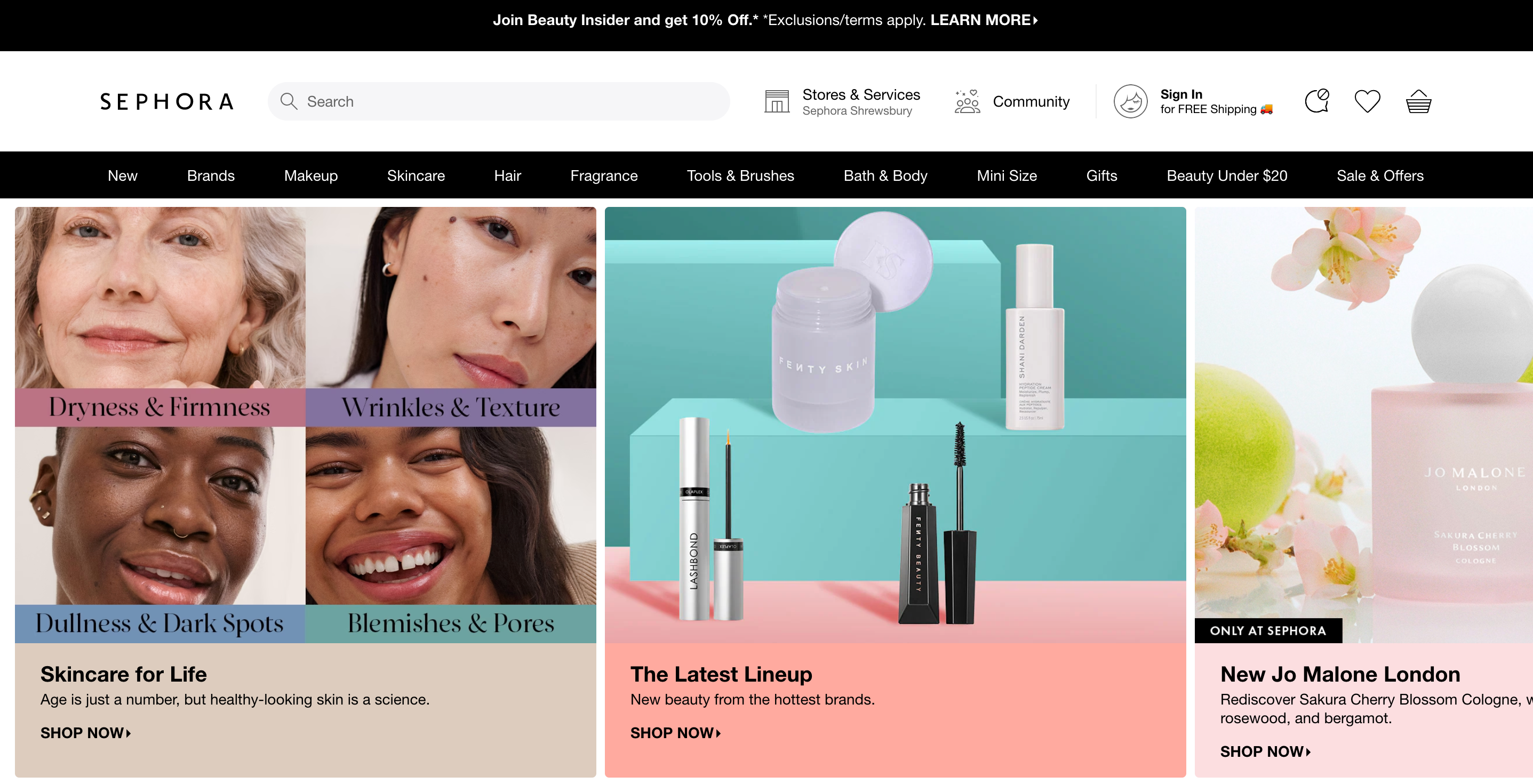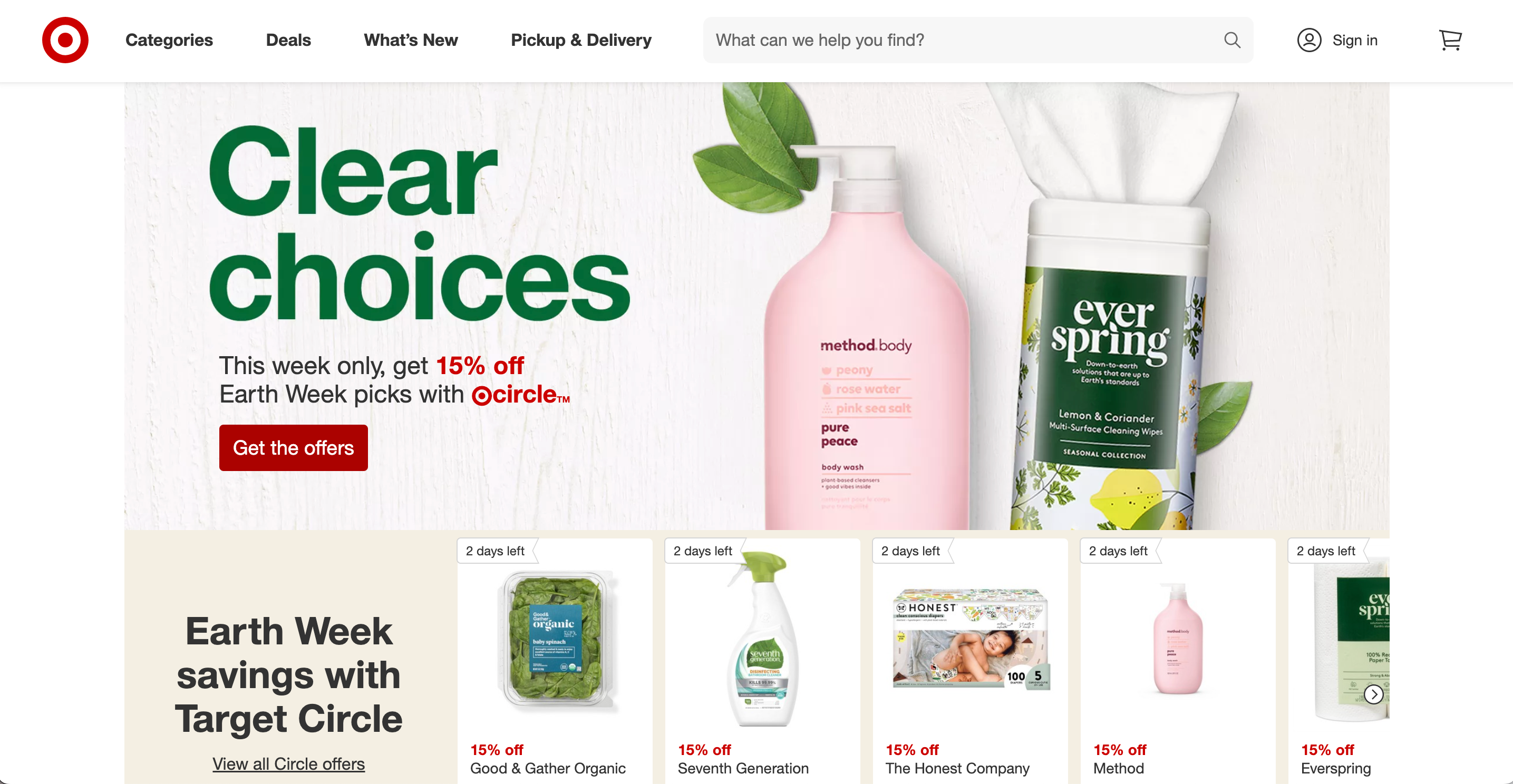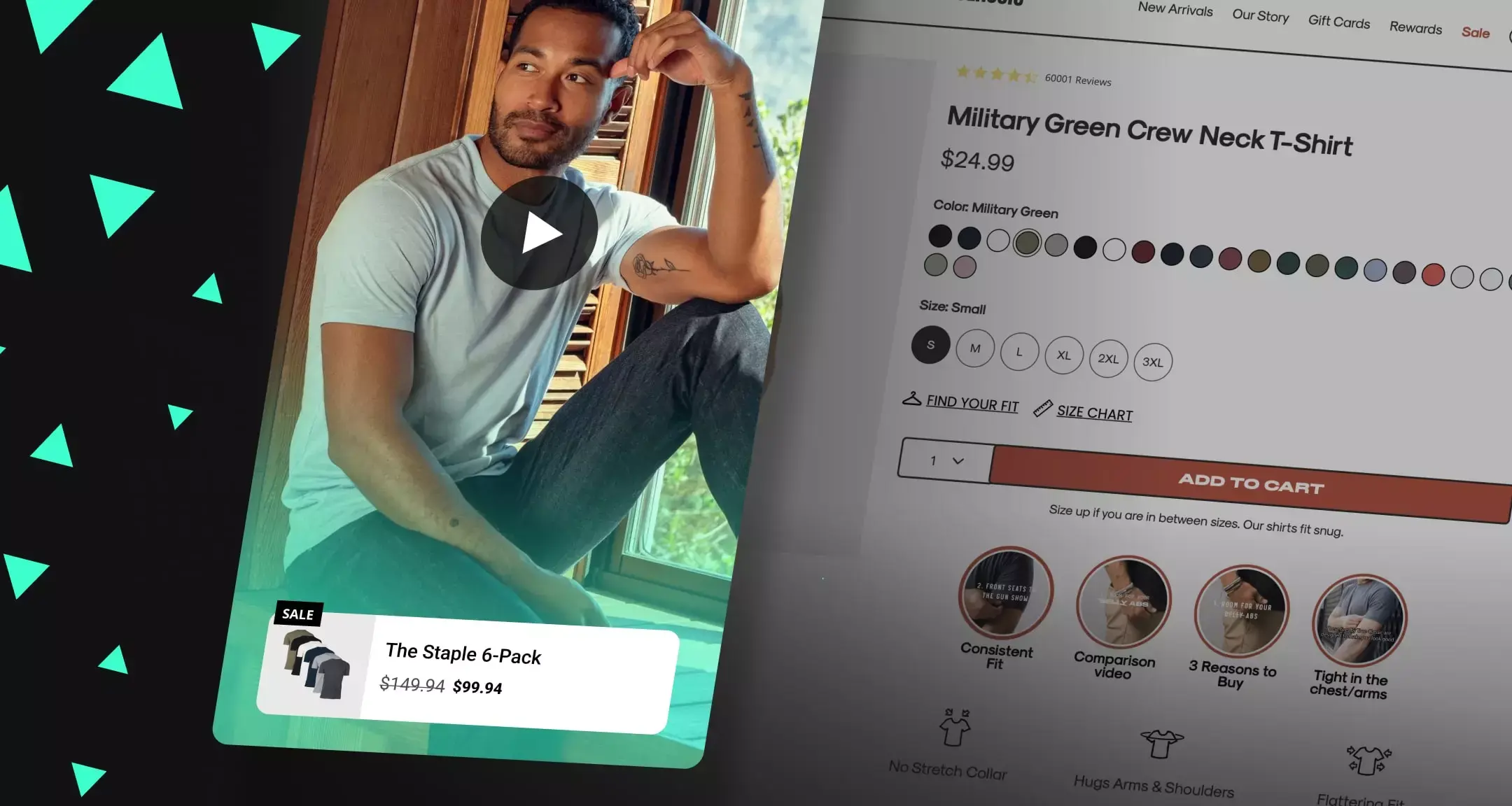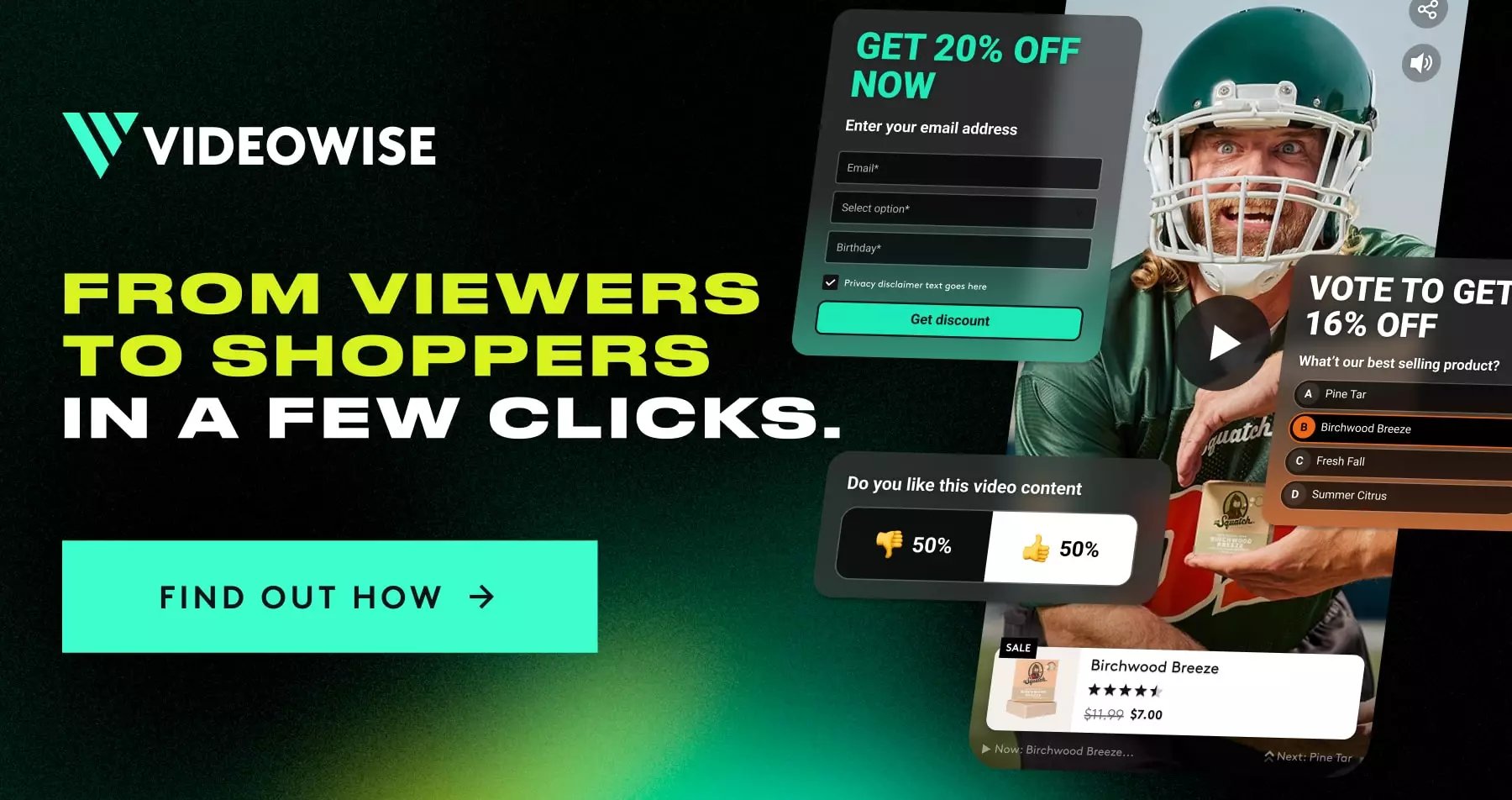Share
eCommerce sales are expected to reach over $8 billion by 2026. With retail giants like Amazon making two-day (or less) shipping a reality and platforms like Shopify making it easier than ever to build your eCommerce store, this comes as no surprise.
But as eCommerce grows and becomes more sophisticated, your business processes need to as well. Omnichannel eCommerce—or the ability for your customers to reach you and shop with you on any platform of their choosing—needs to be a priority.
Throughout this article, you’ll learn more about what omnichannel eCommerce is, major benefits and examples, plus how to create your omnichannel eCommerce strategy.
What is omnichannel eCommerce?
Omnichannel eCommerce—also sometimes referred to in the inverse as eCommerce omnichannel—is the strategy of creating a consistent shopping experience using online platforms.
Let’s look at a couple of examples.
In this first one, a customer discovers a new brand on Instagram. They look through the brand’s feed, interested in what they’re seeing. So they click on the brand’s website to check out the products.
On the website, they’re able to see the exact same messaging, products, and more. It’s obvious these two channels are connected. They leave the website with a plan to come back and make a purchase.
But before they make a purchase, they see a Facebook ad with one of the products they are interested in. They send a Facebook message confirming a couple of questions before making a purchase—the message they receive back is also in line with the rest of the messaging they’ve seen.
They make a purchase. The product arrives in beautifully branded packaging and is exactly what they expected. The entire experience this customer has had with this brand has been consistent, building trustworthiness and loyalty.
Here’s another, simpler example. A customer has a loyalty account with your business. They’ve previously shopped in your store, typing in their phone number to get perks for each purchase.
Now, they’re in a pinch and don’t have time to make it down to your shop, so they’re wanting to make the purchase online. The problem is that they know exactly where in your shop the product is and what it looks like—but can’t remember the name.
But no worries. They’re able to log into your website or onto your shopping app with their loyalty program credentials, see their past purchases, and easily rebuy the same product.
That’s omnichannel eCommerce. Offering a consistent experience across all of your digital channels (and maybe even some in-person channels).
Omnichannel eCommerce vs. multichannel eCommerce
If you’ve heard the term “omnichannel” thrown around before, chances are you may also be familiar with the term “multichannel.” However, multichannel is so two-thousand-and-late.
In the past, it was enough to simply offer sales options on multiple channels, like in-person and online. Now, those channels need to be able to speak to each other. Your shopping app needs to reflect the same sales/orders that someone made in-store or on your website.
More than that, the shopping experience needs to be cohesive. While you might not be able to show sales made on your social media platforms in their account history, you can accept the same payment methods, ensure your stock is properly numbered, and make sure products are named and pictured consistently.
Multichannel didn’t care about all of that. Multichannel meant multiple channels. Omnichannel is more sophisticated, creating a cohesive experience for every customer no matter what platform they choose.
Benefits of omnichannel eCommerce
If you haven’t realized already, an omnichannel strategy is the future of eCommerce—at least, until the next new technology comes into play. It’s time to move on from multichannel and ensure your shopping and communications speak to each other, creating a cohesive experience for every single customer.
Here are a few benefits of omnichannel eCommerce that your business needs to keep in mind if you’re still on the fence about adopting this type of strategy.
1. Create a smoother customer journey
2. Offer better personalization
3. Reach customers via their preferred channels
1. Create a smoother customer journey
Not only does omnichannel create a more consistent and cohesive customer journey, it also enables you to collect customer data better.
Nabeel Abdullah, CEO of Sapphire Retail Limited, says,
“You can accumulate better marketing strategies through omnichannel shopping because it allows retailers to keep track of customer behavior. With more channels and options for consumers to shop, that generates more data for retailers to use. You can discover what demographics are buying what and through which channel. You can uncover a lot of data as it pertains to purchasing behavior. Take advantage of that vast data by creating more-focused marketing campaigns.”
This can help your brand do an even better job at reaching your customers exactly where they are.
Plus, data shows that customers are using different channels to shop—sometimes at the same time. One survey found that 56% of consumers use their smartphones to research products and shop while in an actual store. The customer journey is nuanced, and omnichannel retail is key for ensuring you meet your customers at every major touchpoint.
2. Offer better personalization
More data means you know what your customers want. Knowing what your customers want means you can better personalize your offers. This is all possible through omnichannel retail/commerce, and consumers love personalization.
Marcus Hutsen, Business Development Manager at Patriot Coolers, agrees that personalization is key:
“Omnichannel shopping bolsters customer loyalty. If you can make the shopping experience more convenient for more people, they are going to stick around and keep buying from you. If the shopping experience is easy and the service feels more personalized to them, they will make repeat purchases through your website and app.”
3. Reach customers via their preferred channels
Some people prefer to shop in person—they always have and always will. Others want the convenience of opening an app on their device and placing a quick order. Some love shopping while browsing social media. Omnichannel ensures that all of those people can make purchases and get in touch with your business the way they most enjoy.
Maria Harutyunyan, the co-founder of Loopex Digital, shared a recent client case study as they started moving towards an omnichannel shopping experience:
“One of our online fashion retail clients invested heavily in SEO and PPC campaigns but struggled to drive traffic to their website. After reviewing their digital marketing efforts, we realized they were too one-dimensional—solely optimizing their website for search engines and running social media ads.
“What they were missing out on were potential customers who preferred shopping on other channels, like marketplaces such as Amazon and eBay.
“We recommended an omnichannel approach that included listing their products on popular marketplaces, integrating their website with social media channels, and optimizing for mobile devices.
“The results were impressive—our client saw a significant increase in website traffic and sales, as well as growing brand awareness. By providing a seamless shopping experience through multiple touchpoints, customer satisfaction, and loyalty also increased.”
By providing even more channels, customers were able to shop where and how they were most comfortable, resulting in a better ROI.
4. Increase sales and traffic
Reaching customers where they want to do their shopping means more people can make purchases. This, of course, increases sales, revenue, and traffic. Use omnichannel commerce to improve the customer experience and bring in even more sales.
Dan Gray, CEO of Vendry, says, “As the costs associated with acquiring customers via digital marketing continue to rise, retailers need to test and adopt omnichannel retail strategies such as pop-ups, wholesale, or their own brick and mortar locations to provide customers multiple channels for which they can discover the brand.
“If done properly, not only will CPAs go down as customers are acquired via multiple sales channels, but omnichannel customers often spend more as physical and online purchases have very different use cases.”
Data shows that brands using three or more channels generate 494% more orders than those using a single channel. This is just another reason why omnichannel is key.
Examples of omnichannel eCommerce
We covered a couple of hypothetical examples of an omnichannel strategy. But let’s walk through how four well-known companies have made omnichannel a reality. You can easily scale down these strategies for your own small business.
1. Sephora

Sephora is a great example of omnichannel commerce. Channels include:
-
Over 2,700 brick-and-mortar stores
-
Website
-
Mobile apps
-
Social media
-
Email
However, Sephora also has a loyalty program called Beauty Insider that helps spur the brand’s omnichannel approach. Connected to a Sephora shopper’s account, Beauty Insider helps keep track of all orders and purchases, both online and offline.
This makes it easy for customers to look back on past purchases and find products they need again. This transparency into purchase history is key with nuanced products like makeup, with a million different shades, textures, and more.
Offering such an essential perk has helped solidify Sephora’s place in the makeup retail industry. It makes repeat shopping trips easy for their customers, improving customer loyalty and customer satisfaction.
2. Amazon

Amazon is king for omnichannel shoppers. With a website, app, virtual assistant (Alexa), and more, there are endless shopping channels and ways to make a purchase through the Amazon online marketplace.
Let’s name just a few ways shoppers can make a purchase from Amazon:
-
Head to Amazon.com on their devices to place an order
-
Access the responsive online store via their mobile device
-
Download the mobile app for an even more seamless shopping experience
-
Ask their Alexa home assistants to order something for them
-
Purchase a new book through their Kindle device or app
-
Rent or buy a movie/TV series from Amazon Prime Video
Not only do they have many different channels, all of the channels communicate with each other. If a customer orders something using their Alexa, the order will appear in their account history. They’ll also receive a confirmation email no matter which channel they use.
By keeping the process similar across each channel, Amazon helps customers feel at ease using whichever sales channel they prefer when making their purchases.
3. Target

Retail giant Target shows us another great example of omnichannel retail. While a popular brick-and-mortar store, the company knows that its customers also often shop online versus in-store.
This is why Target makes it easy for its customers to shop online via its mobile app as well as its online store. It also makes it easy to move between devices and continue your shopping. As long as a customer is logged into their Target account, they can access items added to their cart across devices—and even from the website to the mobile app.
More than that, if a Target customer uses their phone number in-store, it connects to their online account. They can then browse through their past purchase history, toggling between online purchases and those made in-store.
This creates a seamless customer experience, enabling customers to go back and re-purchase things they’ve bought before easily. All they have to do is input their phone number to ensure it connects to their Target account.
4. Oasis

Oasis is a UK fashion retailer that is bringing the physical store experience more online in order to appeal to omnichannel customers. In their brick-and-mortar stores, they have associates using iPads, so they’re able to offer completely up-to-date information on product stock, pricing, and more.
Plus, they can use these iPad to access a customer’s past purchases, helping them to confirm sizing and further improve the entire customer experience.
These iPads also act as cash registers, so there’s no waiting in line. Store associates can help customers find the right products and immediately check out without being bounced from the store area to the storage area.
And if the product a customer is looking for in their preferred size or color happens to be out of stock, the associate can immediately place an online order right on their iPad so the product is shipped to the customer’s door.
This melding of online and offline channels helps create a seamless experience for every customer—proving, yet again, more benefits of omnichannel for your business.
How to create an omnichannel eCommerce strategy
Ready to create an amazing omnichannel shopping experience for your customers? We’re going to cover four major steps you need to take in order to make omnichannel commerce work for your online store.
1. Choose your sales and marketing channels
2. Connect your channels to provide a cohesive experience
3. Ensure your internal processes work with your channels
4. Monitor and maintain your channels
1. Choose your sales and marketing channels
The first step is choosing your sales and marketing channels for your omnichannel strategy. Which platforms do you want to use to reach your customers and make sales?
A few include:
-
Physical store: One or more physical locations where you employ store associates and keep products that customers can come in to shop for and buy.
-
Website: An eCommerce store that houses product listings of all available products so customers can browse online and make a purchase to be shipped directly to their homes.
-
Mobile app: A developed smartphone application that showcases products, enables customers to log into their accounts, allows customers to make purchases, and does anything else they can do in-store or on the online store.
-
Social media: Social media sites like Facebook, Instagram, Pinterest, and TikTok enable users to shop with companies directly from the social media app, rather than having to leave the site to go to another app or online website. Brands simply need to upload a catalog of products to enable this seamless shopping feature.
-
Email marketing: Promote products via emails that directly lead to product pages on your website or mobile app.
-
Advertising: Put ad dollars behind promotions for your products to reach an even larger audience for your brand.
Select which channels you want to focus on in your omnichannel commerce strategy. The above five are the different channels your brand is most likely to use—but keep in mind that you’ll need to include other channels for customer support to improve the customer journey and sales process as a whole.
2. Connect your channels to provide a cohesive experience
Once you’ve decided which sales and marketing channels to use—for example, you might settle on purely online channels like a website, social media, email marketing, and advertising—you need to connect them and make sure they speak together.
What do we mean by this?
Look at it this way. If you have both an online store and a physical store that draw from the same stock, you don’t want to list products that are in stock online when the last one just got purchased from your retail store.
Here’s another similar example. You don’t want to run ads promoting a product only for interested customers to click over to your website and see that product is out of stock. Both of these instances disrupt the customer journey and make it obvious that your sales channels are completely disconnected.
Omnichannel retail also ensures a few other things, including:
-
Keeping track of purchases so you know you’re getting the right product
-
Ensuring pricing is consistent and transparent across the board
-
Allowing customers to use the same payment method on every channel
-
Monitoring orders so customers know when they were ordered and when they’ll arrive
There are software available to ensure your sales channels can talk to each other behind-the-scenes, helping your business to provide an incredible, smooth experience that meets customer expectations.
3. Ensure your internal processes work with your channels
If you want to provide an omnichannel commerce experience for your customers, you need to make sure your internal processes and operations can support it first.
In the last point, we mentioned that your stock needs to be accurately reflected across all channels. If you’re using a manual method of keeping track of stock, that simply isn’t going to be possible.
Before trying to switch to omnichannel, look into automated processes and software that can help you improve your internal processes.
For example, Shopify is an eCommerce CMS that can help keep track of your stock when customers buy online. Brands taking advantage of their fulfillment center can get even more benefits from this.
Consider working with a fulfillment center or fulfillment software that can bring your stock and other processes online, so you’re no longer working with pen and paper and other manual processes. Omnichannel relies on software that can communicate with each other, so upgrading your internal processes is key before getting started.
4. Monitor and maintain your channels
Finally, monitor and maintain your physical and digital channels. This is especially important when you’re first getting started so you can ensure your processes are working smoothly and your channels and properly communicating.
However, omnichannel is never going to be a “set it and forget it” strategy. You need to continuously monitor how everything is going and keep an eye out for new tactics and software that can improve it even more.
To start, test, test, test. Test everything. Test your new CMS and fulfillment strategies. Make sure your stock is accurately represented after every single purchase, no matter the channel. If you see any hiccups, get help from a representative with the software you chose.
Test out the checkout and payment process on every channel to make sure it’s seamless and easy. Make sure customers aren’t getting error messages at any point in the process, and it’s just as easy to make a purchase on your website as it is on your mobile app and your social media platforms.
Work with data analytics tools to accurately monitor and gather customer data throughout the process. This can help improve your omnichannel strategy over time as well.
Add new channels as they arise, and don’t be afraid to shut down channels that simply don’t benefit you. If you’re getting one purchase per quarter on Instagram, it might not make sense to keep your stock updated there continuously—you’d be spending more time and effort than that channel is worth.
After you’ve got everything down, it’s maintenance time. Make sure your channels are working smoothly, and you’re able to resolve any issues that might arise quickly. This can ensure you’re always offering a consistent customer experience time and time again.
And finally, make sure that your customer service is up to snuff. Your support agents should also be able to have a clear view of your stock, customer history, and more in order to be able to properly assist customers.
These four steps are the main pillars of kicking off your omnichannel strategy. Time to get started adjusting processes, investing in software, and helping your customers.
Create your omnichannel eCommerce strategy
Get started with your omnichannel eCommerce strategy. Connect your different channels and create a cohesive customer experience. Consider adding on-site shoppable videos as yet another shopping channel for your customers. Learn more about how Videowise can help.
Share





.jpg?width=420&height=420&name=live%20shopping%20top%205%20fashion%20(1).jpg)